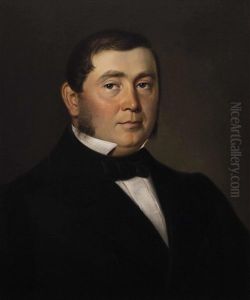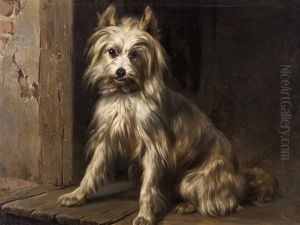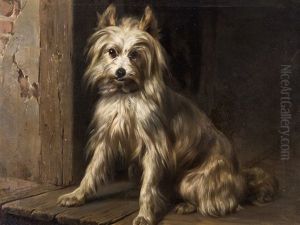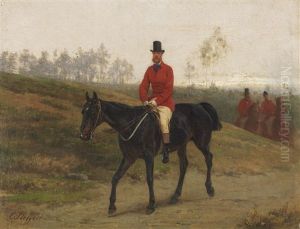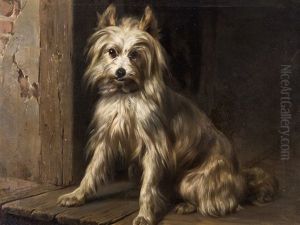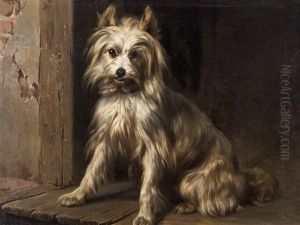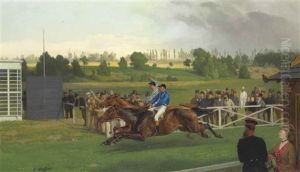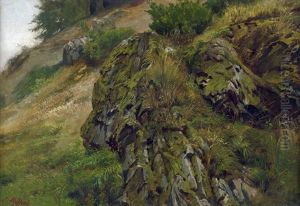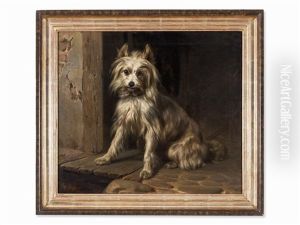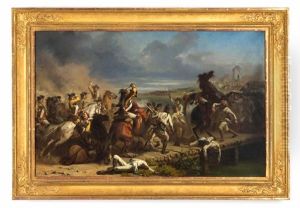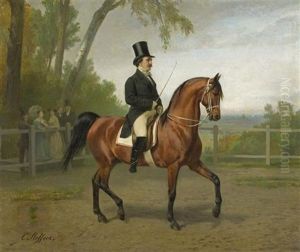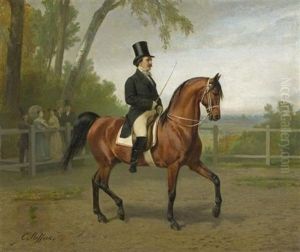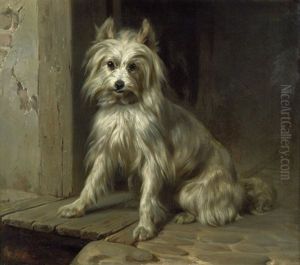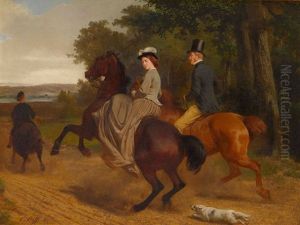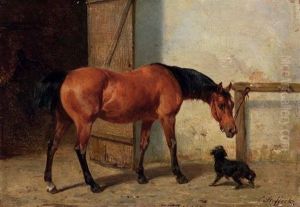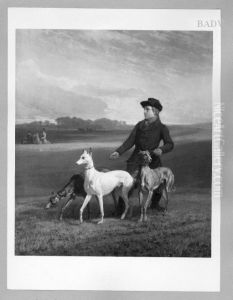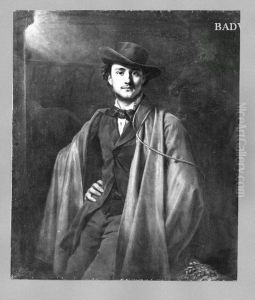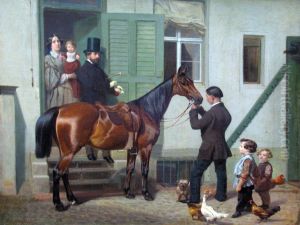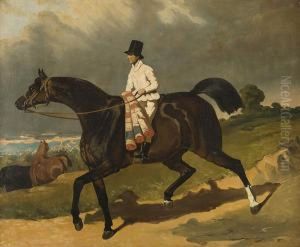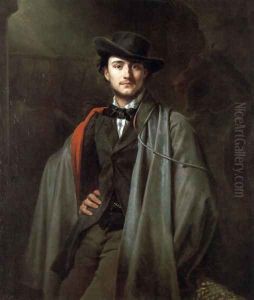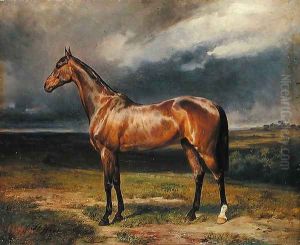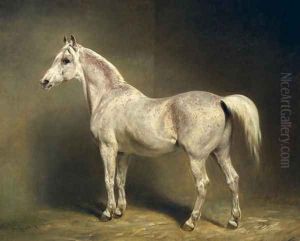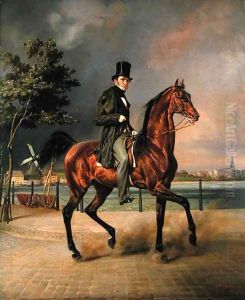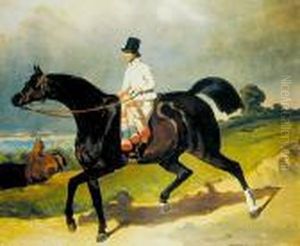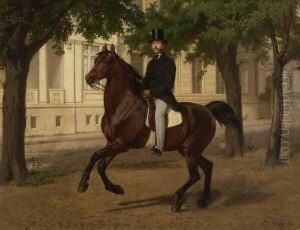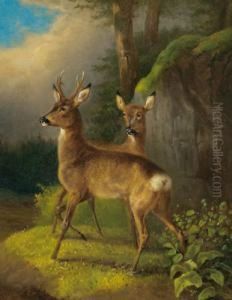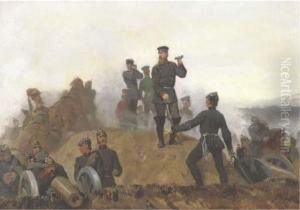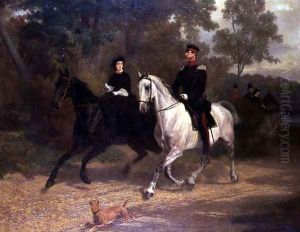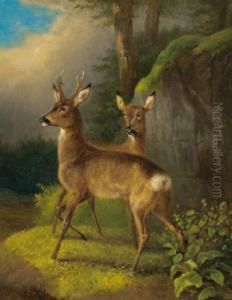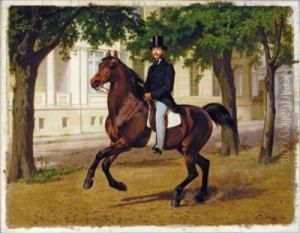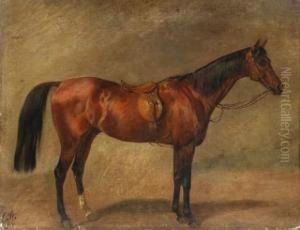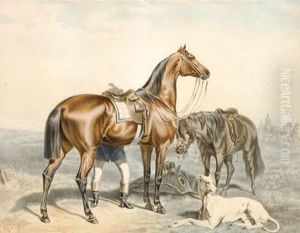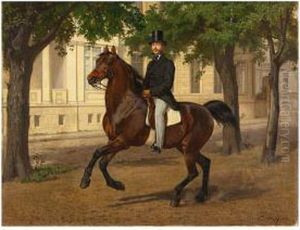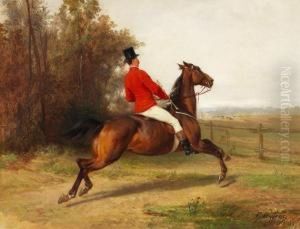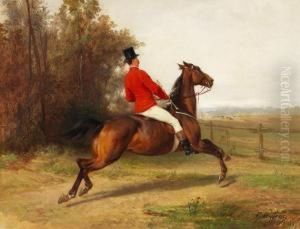Carl Steffeck Paintings
Carl Constantin Heinrich Steffeck was a German painter and lithographer, born in Berlin on April 2, 1818. He was a prominent figure in the 19th-century German art scene, known for his ability to capture the grace and dynamism of horses, as well as his skilled portrayal of historical and genre scenes. Steffeck demonstrated an early passion for art, which led him to pursue his studies at the Prussian Academy of Arts in Berlin. Under the tutelage of prominent artists of the time, including Carl Joseph Begas and Wilhelm Schadow, Steffeck honed his technical skills and developed a keen eye for detail and composition.
Throughout his career, Steffeck was deeply influenced by the Romantic movement, which was evident in his dramatic use of light and shadow, as well as the emotional depth of his subjects. However, he is perhaps best remembered for his extraordinary equestrian paintings, a genre in which he excelled and contributed significantly to throughout his life. His works in this genre display not only his technical prowess but also his profound understanding and appreciation of the horse as a subject, making him a sought-after artist among the nobility and equestrian enthusiasts of his time.
In addition to his equestrian and genre paintings, Steffeck also engaged in lithography, creating works that were remarkable for their detail and sensitivity. He was a respected teacher, passing on his knowledge and skills to the next generation of artists at the Prussian Academy of Arts, where he served as a professor from 1875 until his death.
Steffeck's contributions to German art were widely recognized during his lifetime. His ability to capture the spirit of his subjects, whether in the heat of battle, the tranquility of domestic life, or the noble poise of a horse, earned him numerous accolades and the admiration of both his contemporaries and posterity. Carl Steffeck died on July 11, 1890, in Berlin, but his legacy lives on through his works, which continue to be celebrated for their artistic merit and historical significance.

